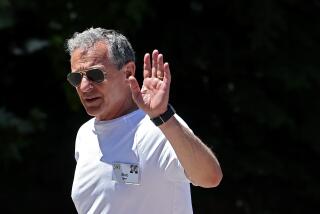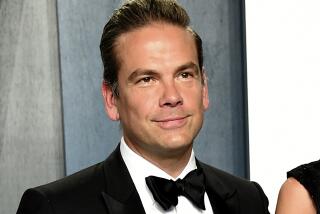Microsoft signals no radical change if longtime insider is selected as CEO
Microsoft is widely expected next week to appoint a longtime insider to be only its third chief executive, signaling the company won’t make radical strategic changes.
Satya Nadella, 46, who joined Microsoft in 1992, is executive vice president of Microsoft’s Cloud and Enterprise group, working primarily with business customers. Although his division posted more than $20 billion in revenue last year, making it larger than most other tech companies, analysts said he faces a huge challenge in assuming control of the sprawling Microsoft business.
The decision to anoint an insider apparently came after months of searching for an outsider who might have the experience running a gigantic corporation and the kind of name recognition that would excite customers and Wall Street.
Nadella is a well-respected executive dubbed by many analysts as a “safe” choice who will forge ahead with the strategy developed over the last year by the man he would replace, Steve Ballmer. That strategy to move past Microsoft’s roots as a software company has led to mixed results as revenue continued to grow despite criticism of Windows 8.
“Microsoft is like an 8-8 football team that makes the playoffs every few years,” said Daniel Ives, an analyst at FBR Capital Markets & Co. “Investors wanted someone who would take them to the Super Bowl. This is a little bit of a yawn. They look around for six months and end up choosing a candidate who is right down the hall.”
Nadella and the Microsoft board will reportedly proceed with contract talks over the weekend. There have also been indications that co-founder Bill Gates may step down from his chairman role. The change would give Gates, who spends the bulk of his time focused on work for his foundation, additional time to consult with Nadella on product and strategy.
Microsoft spokesman Pete Wootton declined to comment on the reports. “It’s not uncommon for searches of this magnitude to last four to six months,” Wootton said. It has now been just over five months since Ballmer made his surprise announcement that he would step down as the chief executive.
Numerous news outlets said they confirmed Nadella’s selection, including Bloomberg, the Wall Street Journal and the tech blog Re/code. As the news spread Friday, Microsoft investors reacted positively, sending the stock up 98 cents, or nearly 3%, to $37.84.
Even as analysts expressed some disappointment over the decision to hire an insider, they acknowledged that it was always going to be difficult to bring in an outsider. The board had already said it wanted to stick with the strategy implemented last year by Ballmer.
Under Ballmer, the company restructured management after overhauling nearly every product in its portfolio to be more focused on the cloud, the growing trend of storing and running programs on remote servers. In addition, Microsoft began developing more of its own devices, such as the Surface tablet, and launched a new version of its gaming console, Xbox One, last fall.
Some initiatives, such as Windows 8, which was redesigned for touch screens, have been controversial. But at the same time, the company’s revenue has continued to grow. In its fiscal second quarter ended Dec. 31, revenue rose 11% to $24.5 billion from $22 billion a year earlier.
Some investors had been pushing the idea of selling off parts of the company, such as the consumer or gaming businesses.
But Ballmer and the board have argued that being in a broad range of technologies is an advantage in a world in which it’s essential for different gadgets and services to work well together.
In recent years, Nadella has been credited with growing Microsoft’s enterprise business, one of the bright spots of Ballmer’s tenure. But he’s had less direct involvement in the consumer businesses, such as the Internet and mobile products, where Microsoft has struggled to gain a bigger foothold.
“He’s a relatively young guy with a lot less work experience than any other CEO running a company the size and complexity of Microsoft,” said Patrick Moorhead, principal analyst of Moor Insights & Strategy. “What will he do with the consumer side of the business that hasn’t had a major string of hits for more than a decade?”
Twitter: @obrien
More to Read
Inside the business of entertainment
The Wide Shot brings you news, analysis and insights on everything from streaming wars to production — and what it all means for the future.
You may occasionally receive promotional content from the Los Angeles Times.











